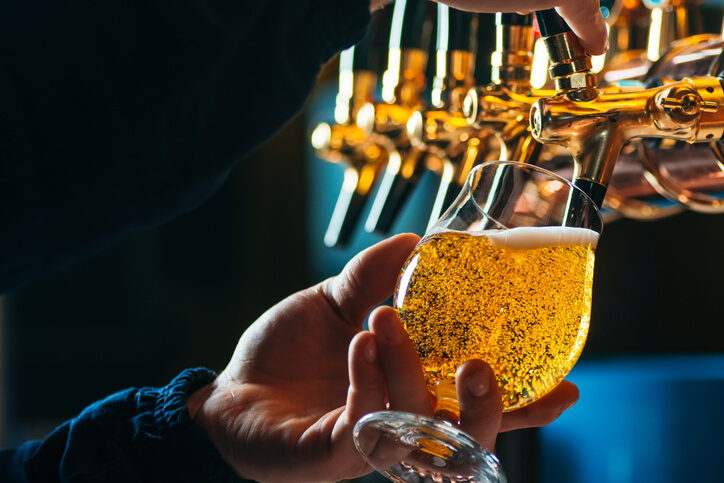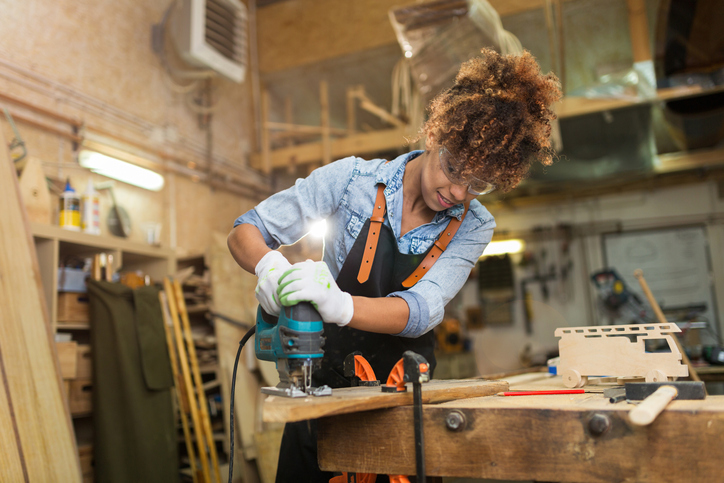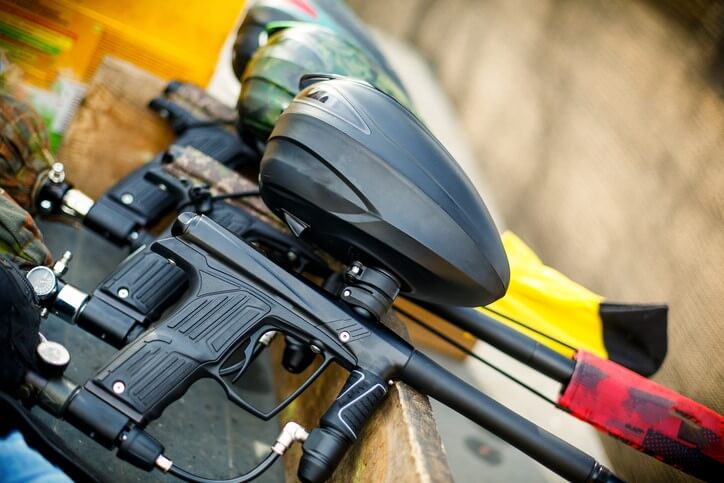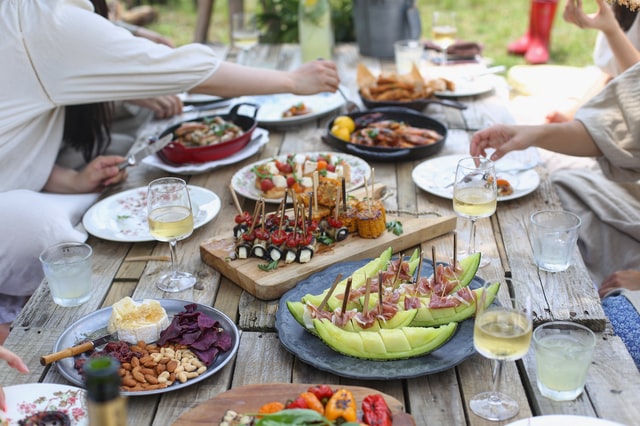Everyone remembers those basement Tiki Bars our parents spent their Christmas bonus on back in the 70s and 80s, right? Kids play upstairs while the adults catch up on the latest cocktail recipe found in Cosmo magazine. They’re coming back in a big way — minus the avocado green and burnt orange shag carpet. The newest libation trend comes in the form of craft beer, and homeowners are finding out just how easy it can be (or as complex and high tech as you like) to bring the pub home and host beer tastings in-house. Your spare room converted shed, or garden bar can be the next holiday gathering destination for friends and family with the right beer equipment.
Transform a Part of Your Home into a Comfy Pub
You can’t very well pull off a fantastic beer-tasting event without a designated space for your guests to gather. It can be a complete renovation or simply a few furniture additions, but the right storage options and decor will transform the area and provide a comfortable place to host and enjoy your company.
Housing your Beer
Building your beer station doesn’t have to be a partial home renovation. It can be as simple as a refurbished bar cart used to store glasses and paired snacks parked next to a fridge for bottles and cans. Whatever space you have for your brews can be something to work with. Some elaborate storage ideas are refurbished cabinets or a bookshelf built into the wall. Once you know where your glasses and bar snacks can be on display, you need to think about how you’ll serve your beer at that perfect crisp temperature to yourself and your guests. They make keg freezers that can be camouflaged into your space so you can serve from a tap system, or you can opt for specialty beer freezers that maintain optimum temperature for cans and bottles.
Design the Space
Don’t be afraid to choose a theme and run with it. Hunting for your bar decor can become a part of your summer yard sale scavenger hunts. Find that perfect vintage neon sign or eclectic stool set. Other bar themes can be centered around items personal to you, such as vintage cars or musical instruments, and even hobbies you participate in, like your prized fish tank — a backdrop for your bar, maybe? Maybe you want your gatherings to revolve around a game you lead your guests to play? To inspire the lighting, seating, and decor for your home beer tasting station, keep those things in mind.
Committing to the Bar Counter
Do you do a little more than dabble in craft beer? Maybe you’re a full-blown homebrewer looking for just the right setup to debut your unique blend of hops and roasted barley. Now that you’ve found the wiggle room, you need to install a full bar counter in your spare room or corner of your lounge living area, and you’re chomping at the bit to send out your first beer tasting event. Once you’re past the plumbing and electrical installation, it’s smooth sailing to hook up your draft beer delivery system and set up the beer pouring mats to catch any spillage. If you don’t specialize in the electrician or plumbing trade, now would be an excellent time to reach out to a handyperson to ensure those particular wires aren’t getting crossed.
Outside the Box
“Home Beer Station” doesn’t have to be so literal, so why not branch outside? The design options for garden or patio bars are endless and can even incorporate a cooking space with a barbeque. If you live in an area with a long spring and summer season, you won’t be able to keep your friends and family away on the weekends. Shed and garage bars are rising in popularity if you have the space available, especially for hobbyists who have already made the space to homebrew. While this can be a fun DIY project in your spare time, the rising popularity of these spaces means there are plenty of professionals who can help you create the area you want.
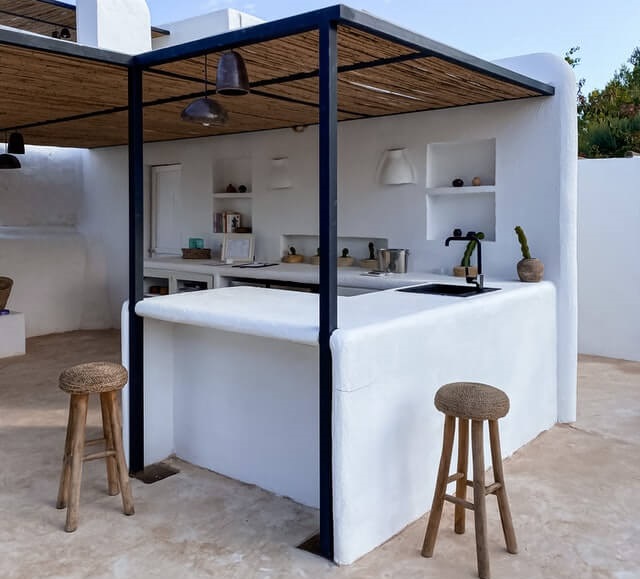
Host a Quality Beer Tasting Party
Impress your Guests
The stage is set, you have all your beer stocked, and the ambiance is just right. Your guests will be amazed when you put this last batch of tips to the test and will be left wondering how much they’ve missed out on drinking straight from the can or bottle. Everything from the way you pour, the temperature your brew comes out at, and even the glass it sits in plays a role in how to drink beer.
Pour like the Pros
When your guests arrive, do you know what to do? The nuances your bartender adopts when serving you from behind the bar aren’t just for tips. There is a right and wrong way to pour beer. It can even change — some say ruin — the way the beer tastes. Few details are consistent whether you’re pouring from a can, bottle, or off a tap. First is that signature 45-degree tilt of the glass to reduce excessive foam, and then aim the pour for the center of the glass, so the beer doesn’t have far to fall.
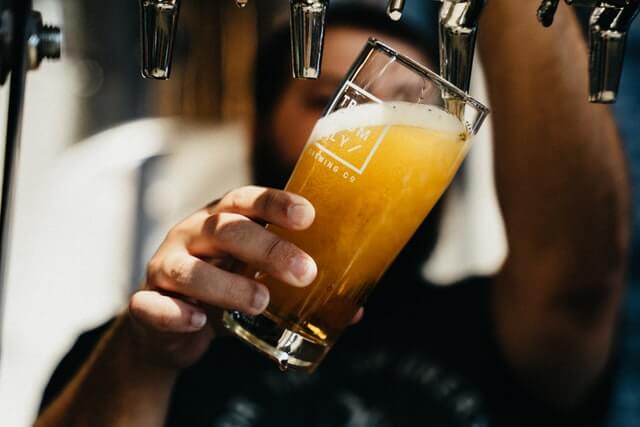
From there, it can get more specific, but a good rule of thumb is to allow the glass to fill halfway before you begin to level it out and then end your pour when the beer meets the two-thirds mark. This will allow for the proper foam, or head, to develop. Speaking of, anywhere between half an inch to one and a half inches is where you want to be. Too much, and your beer is probably warm, too little, and it may be flat or expired. The optimum temperature for beer can be anywhere from 38-55 degrees. Lighter and weaker beers are served colder than the darker and stronger stouts.
Lastly, there are a couple of other things to keep in mind. If you’re pouring Guinness, it’s essential to slowly level your glass throughout the pour and stop three-quarters of the way versus the usual third. Connoisseurs of this particular brand also insist on allowing the drink to settle to its signature black color before enjoying it. According to Guinness guidelines, the preferred “double pour” from a tap should take a full 2 minutes.
If you’re serving draft beer, try to get the tap close to the glass throughout the pour without submerging it. You also need to keep track of how much beer is left in the keg, so no one gets a glass of dregs and foam. You can pour most draft beers the standard way, but if you’ve installed a nitro tap system, you will have to fill the glass halfway, allow it to settle, then finish off to the top. The nitrogen added to the system makes the beer smoother to drink and adds foam more quickly.
Becoming an Expert Beer Tasting Host
First, think about your audience. Are these friends and family who rarely stray from their signature brand or fellow craft beer enthusiasts who know precisely when the hops were added just by tasting it? Armed with this information, you can decide whether you’re going to serve your own homebrew or stock up on a selection of craft beers to sample. This will also help you plan other aspects of the event, such as glassware, food, or activities.

To touch on serving glasses for a moment, you must have the right ones, and either enough to switch out between flavors or a convenient rinsing station. Residue from your last pour can undoubtedly affect the integrity of the next. There are way more glass options than is practical to keep in stock, but having a few types to complement the beer you serve most is worth it.
Many beer tasting parties consist of a knowledgeable host leading guests through beer pairings that accentuate certain flavors within the beer. You can even provide a chart for making notes that guests can compare at regular intervals to see if they detect the same fruity or flowery aromas.
For a more laid-back soiree, ditch the pen and paper and opt for a larger visual that tells the guest what they should be tasting. This is an excellent way to utilize a chalkboard or projector design concept. From there, you can refer to the guide at the start of each brew and then let the event follow a path of its own through jovial conversation or game participation.
Creating the Perfect Pair
Food is often a centerpiece of gatherings, but in the case of home beer tasting functions, it’s better served as a complementary supporting role. You certainly don’t want your guests tasting on an empty stomach, but what kind of food you serve to complement the brews you will taste that day matters. Some beers have a strong flavor that you want to highlight and pair with foods that contrast. A rich chocolatey stout will completely drown out light seafood or salad and goes better with an equally rich chocolatey cake. Fresh, crisp ales pair exceptionally with light crispy food like fried fish or a salad, and fruity desserts will highlight beers with fruit undertones.
The Great Eight
Here’s a quick guide to the eight types of beers and their best flavor pairings.
- Light lagers: crisp and refreshing to wash down favorite fried foods like burgers, pizza, and wings.
- Wheat beer: similar to light lagers with fruit notes usually added. Great with fried favorites, but also fruity desserts.
- Pale ales: bitter but often with fruity or herbal flavorings. Drink with rich, spicy foods like Mexican dishes.
- Amber ales: the dry, crisp mouthfeel makes for a great palate cleanser. Pair with barbecue or loaded pizzas.
- Dark lagers: a popular European drink, so it matches European dishes perfectly. German sausage, bangers and mash, and goulash will be a delightful combination.
- Brown ales: a versatile bitter beer so great to wash down pizza, burgers, and wings for those who prefer the more hoppy profile.
- Porters: this drink’s bold flavors need to be enjoyed with foods that these qualities won’t drown out. The coffee and chocolate tones complement Mexican mole, crab, lobster, and barbecue beautifully.
- Stouts: the darkest of beers, it’s similar to porters but with a signature black color. The food pairings are much the same, emphasizing items that go well with the rich chocolate and coffee aromas, such as dessert items.
All that’s left is to dive into the merriment with cherished family, new friends, and guests of all kinds. Once you’ve christened your homebrewing mecca or craft beer station, you’ll learn the style, activities, and pairings you enjoy most with your company. The fun will carry on from one event to the next as you appreciate this 5,000-year-old tradition with modern elements and technology.
